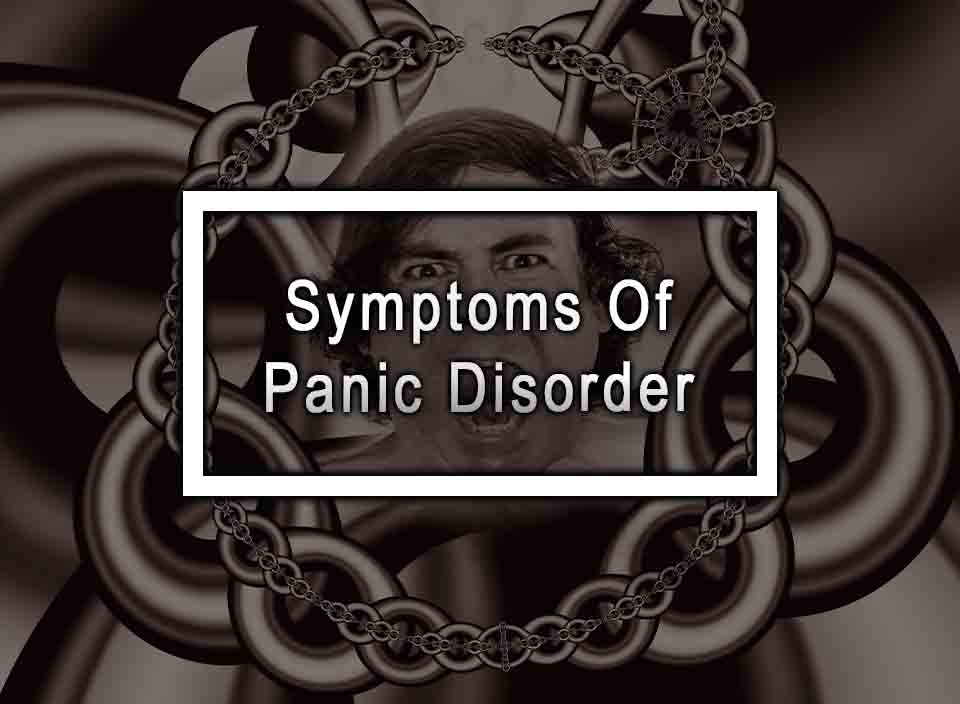Table of Contents
ToggleHere Are Some Symptoms Of Panic Disorder
A loud racing heartbeat, shortness of breath, sweating, trembling, and the feeling of impending doom are some of the common symptoms of panic disorder. Panic attacks are intense episodes of overwhelming fear and anxiety that can interfere with daily life and mental health. Individuals who suffer from panic disorder may experience recurrent panic attacks without any warning signs or triggers, and they may even avoid certain situations or activities because of the fear of having a panic attack. In this article, we will explore the symptoms of panic disorder, what causes it, how it is diagnosed, and what can be done to treat it.
Panic attacks can be terrifying and often come out of the blue. Symptoms of a panic attack often last for several minutes, and it can be difficult to calm down during that time. The physical symptoms of a panic attack can include:
- A pounding heartbeat or a racing heart
- Shortness of breath or hyperventilation
- Trembling or shaking
- Sweating
- Chest pain
- Nausea or stomach discomfort
- Feeling dizzy or light-headed
- The feeling of choking or suffocation
- Chills or hot flashes
- Tingling or numbness in limbs or extremities
- Fear of losing control or going crazy
- Fear of dying
Panic attacks can also cause psychological symptoms, such as feeling detached from the world, feeling like you’re watching yourself from outside your body, and feeling like you’re in a dream-like state.
What Causes Panic Disorder?
The cause of panic disorder is not entirely known. However, several factors can increase the risk of developing the disorder, such as genetics, brain chemistry, and environmental factors. The panic disorder tends to run in families, which suggests that genetic factors play a role. Brain chemistry also plays a role in the development of panic disorder. Research has shown that individuals with panic disorder have differences in their brain chemistry, which may make them more susceptible to anxiety and panic attacks.
Environmental factors such as stress, trauma, and other life events can also trigger panic disorder in some individuals. For instance, individuals who have experienced a traumatic event, such as physical or sexual abuse, may be more likely to develop panic disorder.
Diagnosing Panic Disorder
Panic disorder is diagnosed based on the signs and symptoms that a person experiences. Typically, individuals are diagnosed with panic disorder if they have recurrent, unexpected panic attacks followed by persistent worry or fear of having another panic attack for at least one month. The diagnosis also considers any social, occupational, or other kinds of impairment that the individual may experience due to panic attacks.
Medical professionals consider other conditions that may cause symptoms similar to panic disorder, such as heart disease, asthma, or even substance abuse. To diagnose panic disorder, a doctor may ask about a person’s medical history, conduct a physical exam, and perform diagnostic tests to rule out any underlying medical conditions.
Treating Panic Disorder
Panic disorder can be effectively treated with medication and therapy. Medications such as antidepressants and benzodiazepines can help reduce the symptoms of panic disorder. Cognitive-behavioral therapy or CBT, is also an effective treatment for managing panic disorder. CBT involves working with a mental health professional to identify and address negative thought patterns and behaviors associated with panic attacks.
Conclusion
In conclusion, panic disorder is a complex and potentially debilitating condition. However, there are several treatments available that can help individuals manage their symptoms effectively. If you or someone you know experiences symptoms of panic disorder, it is essential to seek medical attention to receive the appropriate diagnosis and treatment. With the right treatment and support, individuals with panic disorder can lead healthy and productive lives.
Symptoms Of Panic Disorder FAQ
Here are the most common questions about symptoms of panic disorder.
How long do panic attacks normally last?
Panic attacks typically last for about 10 to 20 minutes, but can last longer in some cases.
What triggers panic attacks?
Panic attacks can be triggered by various factors, including stressful life events, changes in routine or lifestyle, physical or mental health conditions, substance abuse, and a family history of panic disorder.
Can panic disorder be treated?
Yes, panic disorder can be treated with psychotherapy, medication, or a combination of both. Cognitive-behavioral therapy (CBT) is one of the most effective treatments for panic disorder.
How can I help someone who is experiencing a panic attack?
You can help someone who is experiencing a panic attack by remaining calm and supportive, encouraging them to breathe slowly and deeply, providing a quiet and safe space, offering reassurance and comfort, and helping them seek professional help if necessary.
Can panic disorder cause physical health problems?
Panic disorder does not directly cause physical health problems, but the physical symptoms associated with panic attacks can sometimes lead to other health issues. For example, frequent or severe panic attacks can cause heart problems or respiratory issues. Additionally, individuals with panic disorder may develop substance abuse problems or experience physical symptoms from medication side effects. It’s important to seek treatment for panic disorder to help manage these potential health risks.
More like this: What Is Eating Disorders











